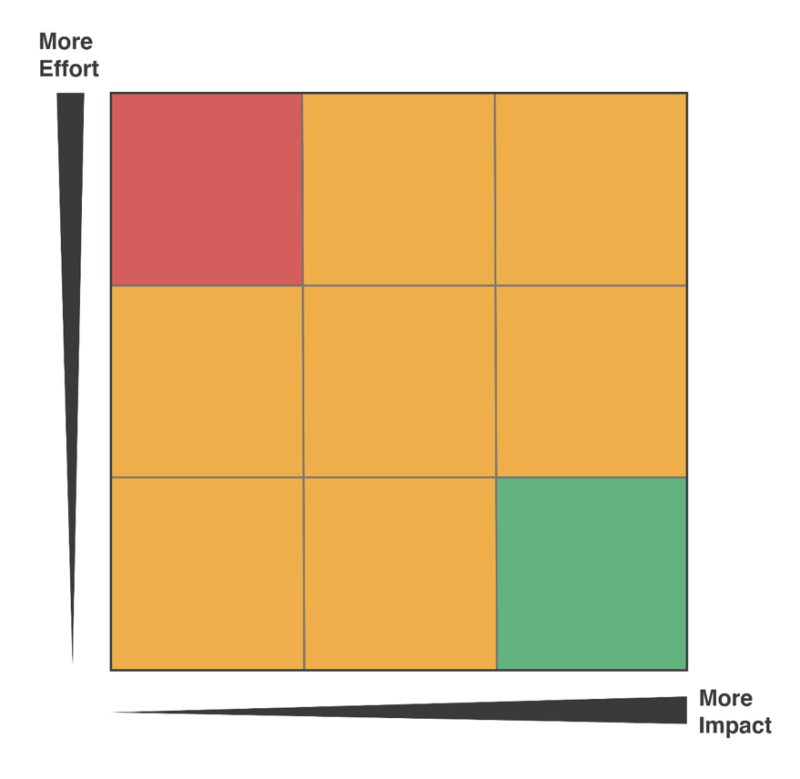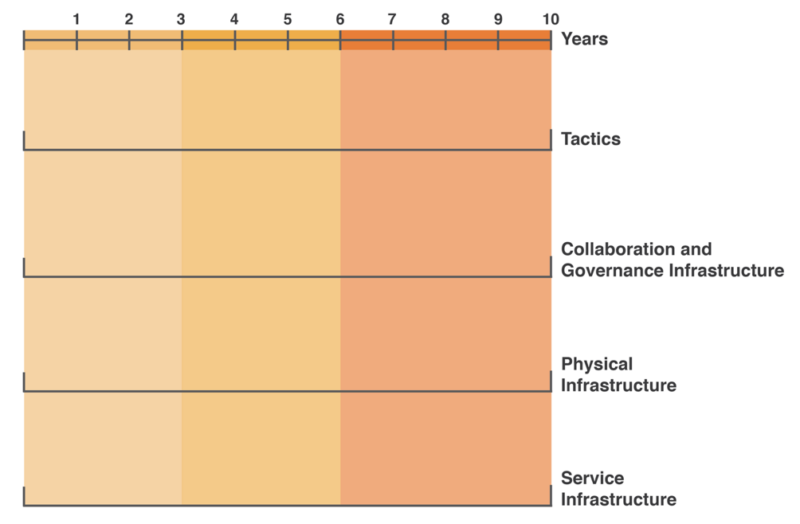Digital Tools to Facilitate Complete Trip Planning Appendix: Worksheets
- Date: February 3, 2023
Jump to section
The worksheets help leverage what was learned through Chapters 1, 2, and 3 and apply the knowledge to the action steps provided in Chapter 4. These worksheets can be completed as a group, the project team for example, or by individual professionals. The purpose of the worksheets is to help apply the information in the Guidebook to the unique situations of professionals—resulting in basic guidance for how to go about providing digital tools for Complete Trip planning.
Answer the questions below to the best of your ability. If an answer is unknown on the first pass, pause and collect information and/or discuss the question with colleagues, then attempt to answer the question again.
Step 1: Clarify challenges related to digital tools for the Complete Trip
- Who are the likely stakeholders (including end users) for the project?
- Who will the project manager likely be?
- What are some commonly known end-to-end journeys in your project team’s area?
Draft a set of journey diagrams as shown in Section 1.2. Note the digital tool components such as trip planning, booking, payment, and navigation that are likely within the journey segments as shown in Section 4.3.1.
- What might some digital challenges along those end-to-end journeys be?
- Who is likely to experience these challenges? Which individuals or groups?
- How impactful are these challenges?
Step 2: Consider potential tactics to address digital challenges
- What are some potential tactics that could help address the identified challenges?
- What factors might impact the level of effort for these tactics?
- Which software option is more likely: commercial off-the-shelf (COTS), open source/public domain, or custom software?
- What types of available resources might be brought to bear on the project, provided by your organization? And from partner organizations?
- What projects covered in the Guidebook as “highlighted projects” or in the project table in Section 2.3 can be used as relevant examples?
- Which tactics are High effort? Medium effort? Low effort?
Step 3: Plan for providing digital tools
- Plot your tactics in the “tactic comparison table” below according to level of effort and impact.
- Add your tactics to the “planning timeline” below according to the estimated date of completion.
- Add your ideas for supportive infrastructure below to the “planning timeline.”
- Which tactics have significant “reinforcement potential” during the next 3 to 5 years?
- Revise the timeline and supportive infrastructure as needed based on the reinforcement potential of the tactics.
- Consider and discuss plans to begin work on a project management plan for the first phase of the project, typically for a three- or five-year horizon.


Planning Effort Checklist
Once the 10-year general timeline is ready, the project team should check if the “guidelines for improving the Complete Trip through digital tools” from Chapter 4 are being followed. If not, adjustments should be made to the general timeline. Some of the items below relate more to the project management plan that will be created later, rather than the 10-year general timeline. In such cases, make notes about what to ensure is included in the project management plan.
- Complete information: Will the planned digital tools display the most complete information possible, even if that means providing multiple tools—including the full range of modes and all the information on personal requirements that users may need?
- If so, how will this be integrated?
- If not, what is missing, and how might it be better addressed in the short or long term?
- Accessibility: Will all users be able to access the planned digital tools?
- If so, how can this be determined?
- If not, how can this be rectified?
- Intermodal options: Will the planned digital tools give special attention to intermodal options and the transfers that are required?
- If so, how have transfers been addressed?
- If not, revisit the tools through the lens of intermodal options.
- Connected plan, book, pay, and navigation steps: Have these typical steps been considered for the planned digital tools?
- If so, how are they addressed?
- If not, how can they be considered?
- Ability to update status of services and physical infrastructure: Will the status of physical and service infrastructure be reflected within the planned digital tools?
- If so, how will this be reflected?
- If not, how can it be reflected?
- Foundation for collaboration and governance: Has the longer-term strategy for the planned digital tools included the collaboration and governance setup requirements to ensure success over time?
- If so, how has this been reflected?
- If not, how can it be reflected?
- Holistic approach to digital and mental calculations: Has the complete user experience been considered, aligning the planned digital tools with the necessary mental calculations that will occur in tandem?
- If so, how has this been designed?
- If not, how can the design be improved?
- Customer experience focus: Has thorough input from transit and mobility system users been included in the planning effort, early on to help determine the best path forward and later to assess the usability and functionality of the planned digital tools?
- If so, how has this been included?
- If not, what should be included?

